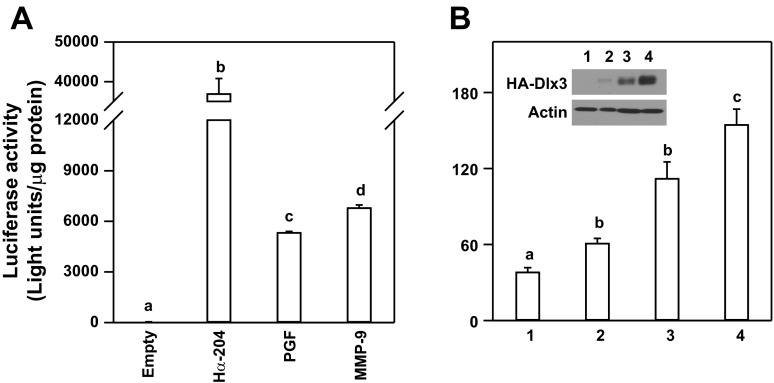Fig. 2.
An MMP-9 promoter fragment coupled to a luciferase reporter is active in placental cells and responsive to Dlx3 overexpression. A: transient transfection studies in JEG3 choriocarcinoma cells were used to compare the relative promoter activity of the 1.9-kb portion of the MMP-9 gene promoter-luciferase reporter (MMP-9) to the luciferase reporter construct without a functional promoter (Empty), a 0.2-kb portion of the glycoprotein hormone α-subunit (Hα-204), and 5.2-kb placental growth factor (PGF) gene promoter luciferase reporter. B: Dlx3 overexpression was used to test the inducible activity of the MMP-9 luciferase reporter in JEG3 cells. Cotransfection of the MMP-9 luciferase reporter with a control vector (2.0 μg) or increasing doses of an expression vector encoding hemaglutinin (HA) epitope-tagged Dlx3 (0.5, 1.0, and 2.0 μg) was carried out. Data are reported as relative luciferase activity standardized by total cellular protein content from representative studies (n = 3/treatment). Western blot analysis was used to confirm HA-tagged Dlx3 overexpression (inset). Lane 1, control; lanes 2–4: HA-Dlx3 expression vector doses of 0.5, 1.0, and 2.0 μg, respectively. Actin was used as a lane loading control. All studies were replicated on at least 3 separate occasions with equivalent results. Bars with varying letters differ, P ≤ 0.05.

